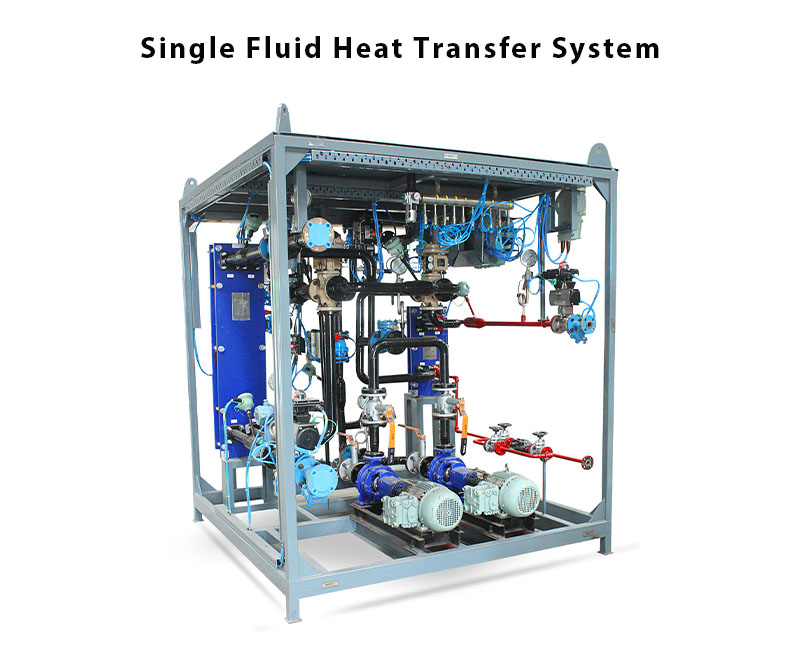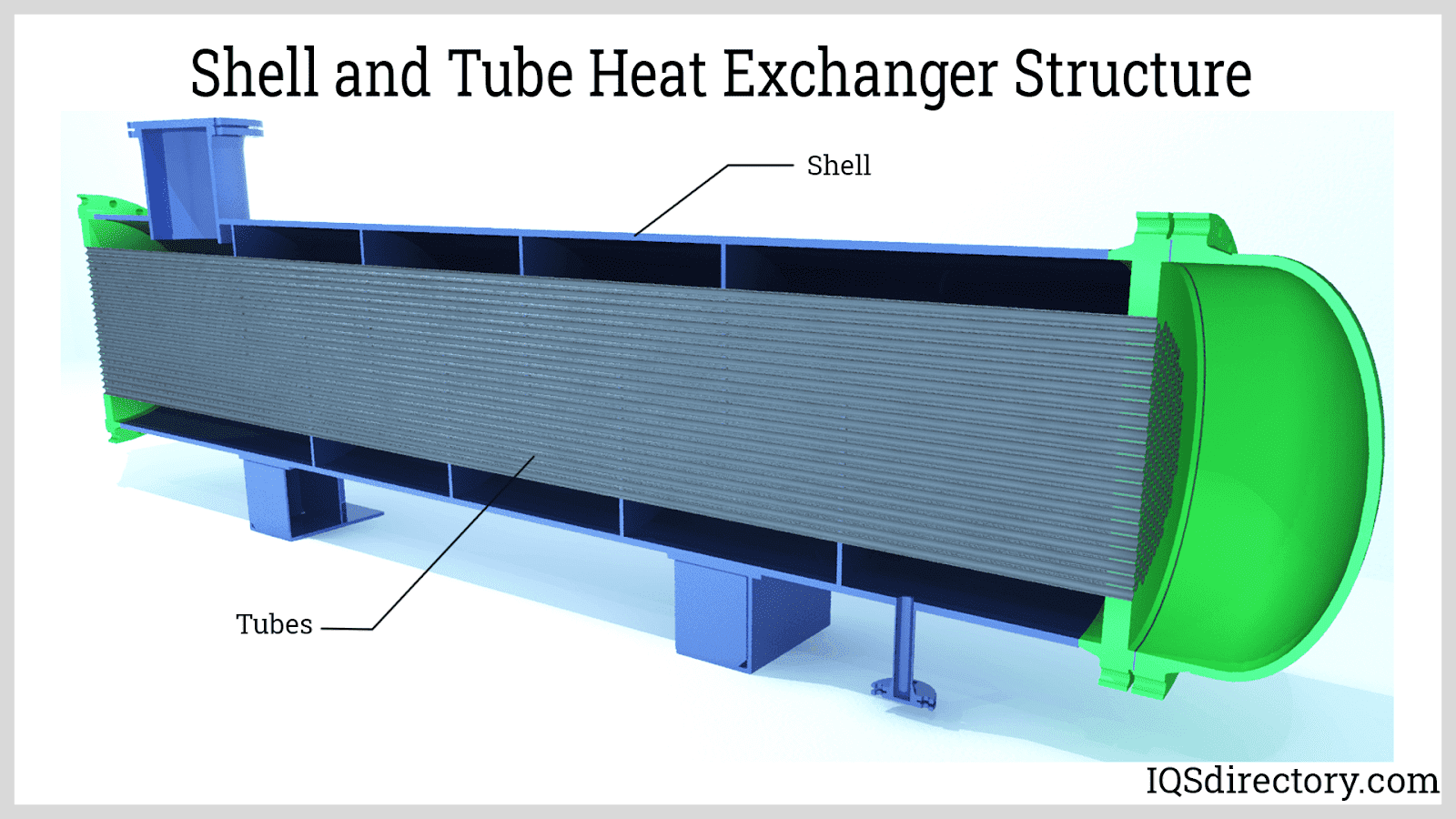How DVS Heat Transfer Systems Are Pioneering Sustainability Trends in Thermal Engineering
The Duty of Heat Transfer Solutions in Sustainable Power Solutions for the Future
Heat transfer systems are important in the pursuit for lasting power solutions. They maximize thermal energy management, enhancing the performance of eco-friendly innovations. By utilizing systems like convection, transmission, and radiation, these systems minimize power losses. Their function in solar thermal and geothermal applications is particularly substantial. As developments arise, the possibility for further developments elevates important concerns about future energy methods. What growths will shape the landscape of sustainable power?
Recognizing Heat Transfer Systems

The Significance of Thermal Power Monitoring
Efficient thermal energy monitoring is necessary for taking full advantage of energy effectiveness and minimizing waste in different systems. By managing temperature and maximizing Heat transfer processes, companies can substantially lower power intake and operational costs. Efficient administration entails the implementation of sophisticated innovations and techniques that keep an eye on and regulate thermal conditions within systems, making sure that energy sources are made use of efficiently. Furthermore, appropriate thermal power management adds to decreasing greenhouse gas discharges, straightening with global sustainability objectives. It likewise boosts system dependability and efficiency, causing boosted item top quality and longer equipment lifespan. Ultimately, prioritizing thermal energy administration is a vital action towards producing extra lasting power solutions and promoting an accountable method to energy consumption in commercial and residential contexts.
Applications of Heat Transfer in Renewable Power
While various renewable resource resources guarantee sustainability, the reliable application of Heat transfer plays a vital function in their effectiveness. In wind energy systems, Heat transfer is used for turbine part cooling, improving performance and longevity. Geothermal power counts on effective Heat exchange between the planet's subsurface and the liquid flowing in the system, maximizing power removal. Biomass power procedures likewise take advantage of Heat transfer, as it aids in converting organic materials into usable gas through pyrolysis and gasification. Additionally, in hydropower, keeping optimal temperature levels in reservoirs can improve power output. Each of these applications shows the crucial significance of Heat transfer systems in boosting eco-friendly power technologies, ultimately adding to a much more sustainable power future.
Enhancing Solar Thermal Power Efficiency
As solar thermal power systems proceed to develop, boosting their performance has become necessary for making best use of power outcome. Breakthroughs in Heat transfer modern technologies, such as boosted thermal storage space materials and ingenious Heat exchangers, play a considerable function in boosting efficiency. By using innovative materials that have premium thermal conductivity, systems can move and capture Heat better. Additionally, integrating radar that adhere to the sun's path assurances that enthusiasts receive suitable solar exposure throughout the day. Making use of nanotechnology in solar absorbers can even more increase energy absorption prices. Moreover, including computerized control systems assists take care of and control temperature levels power distribution successfully, resulting in reduced losses and improved general system effectiveness. These improvements lead the means for even more sustainable solar thermal energy remedies in the future.
Geothermal Heating: A Lasting Remedy
Geothermal heating provides a feasible option for lasting power, using significant ecological advantages through minimized greenhouse gas exhausts. Its effectiveness and cost-effectiveness make it an appealing option to conventional heating systems. Obstacles connected to execution needs to be resolved to optimize its possible influence.
Ecological Benefits of Geothermal
Traditional heating techniques add substantially to greenhouse gas emissions, geothermal home heating provides a compelling choice that decreases environmental effect. By taking advantage of the Earth's inner Heat, geothermal systems make use of an eco-friendly energy source, noticeably reducing dependence on nonrenewable fuel sources. This approach generates very little carbon exhausts, making it a cleaner alternative for business and property heating. Additionally, geothermal systems advertise energy efficiency, as they need less power compared to traditional heater. DVS Heat Transfer Systems. The application of geothermal energy likewise assists in reducing air pollution, boosting local air high quality and public wellness. As a sustainable service, geothermal home heating sustains environment adjustment mitigation efforts, positioning itself as an important part in the change in the direction of a greener future
Effectiveness and Cost-Effectiveness
Exactly how does geothermal home heating determine up in regards to performance and cost-effectiveness contrasted to traditional home heating systems? Geothermal heating shows superior effectiveness, frequently achieving a coefficient of efficiency (POLICE OFFICER) of 3 to 5, indicating it creates three to five units of Heat for every device of electricity taken in. This efficiency converts into reduced operating costs, particularly in areas with click this stable geothermal resources. Initial setup prices can be greater than standard systems; nonetheless, lasting financial savings on energy costs and decreased maintenance expenses can balance out these upfront financial investments. In addition, numerous federal governments incentivize geothermal systems with rebates and tax obligation credit ratings, boosting their cost-effectiveness. On the whole, geothermal home heating becomes a economically feasible and lasting alternative to more conventional home heating remedies.
Execution Difficulties and Solutions
Many challenges can hamper the widespread execution of geothermal home heating systems, regardless of their clear benefits as a sustainable power solution. High first installation costs often discourage investors and homeowners, making financing a substantial barrier. Additionally, the geographical constraints of suitable geothermal websites limit access in specific areas. Regional regulations and permitting processes can likewise complicate project growth, resulting in delays. Moreover, public recognition and understanding of geothermal systems stay low, hindering approval. To address these obstacles, targeted education and learning projects can enhance open secret, while government rewards can reduce economic problems. Working together with regional authorities to streamline policies might help with smoother job approvals, inevitably advertising the adoption of geothermal heating as a practical, sustainable power option.
Innovations in Heat Transfer Technologies
Advancements in Heat transfer technologies play an important role in enhancing energy effectiveness and sustainability. Advanced Heat exchangers and phase change materials are at the leading edge of these growths, supplying substantial improvements in thermal management. These innovations not only maximize energy usage but likewise add to minimizing ecological impact in numerous applications.
Advanced Heat Exchangers
Advanced Heat exchangers play a crucial function in enhancing power efficiency across various applications in lasting power services. These tools facilitate the transfer of Heat in between 2 or even more liquids, noticeably decreasing energy intake in processes such as industrial heating, cooling, and power generation. Advancements in products and style, such as using nanofluids and small setups, have actually led to boosted thermal efficiency and minimized size needs. Furthermore, improvements in digital tracking and control systems permit optimized procedure, additional boosting effectiveness. By decreasing waste Heat and making the most of energy healing, progressed Heat exchangers add to decrease carbon impacts and sustain the change toward eco-friendly technologies. Their continued growth is important for accomplishing worldwide energy sustainability objectives.
Stage Adjustment Materials
The integration of phase adjustment materials (PCMs) into Heat transfer technologies stands for a substantial development in energy monitoring and effectiveness. PCMs absorb and release thermal energy throughout their stage changes, allowing efficient temperature level regulation in building products and energy systems. By keeping excess Heat during optimal periods and releasing it when demand rises, PCMs add to pack moving and energy conservation - DVS Heat Transfer Systems. This capacity boosts the efficiency of renewable resource systems, especially in solar thermal applications. Additionally, PCMs can enhance the thermal comfort of indoor atmospheres, reducing reliance on traditional heating and cooling techniques. As technologies in PCM formulas remain to emerge, their function in sustainable power remedies is poised to expand, offering promising methods for future research and application

Future Prospects for Heat Transfer in Sustainable Power
As the demand for lasting energy solutions remains to climb, the function of this link Heat transfer systems is ending up being significantly crucial fit future modern technologies. Developments in designs and products are anticipated to improve performance in Heat transfer, minimizing energy losses in different applications. The assimilation of sophisticated thermal storage systems, such as stage adjustment materials and thermochemical storage, will allow much better monitoring of power resources. Study right into nanofluids and biomimetic Heat exchangers may further optimize thermal performance. The fostering of wise innovations will allow for real-time monitoring and flexible control of Heat transfer procedures. These innovations are positioned to considerably add to the overall effectiveness and sustainability of power systems, leading the way for a more energy-efficient future.
Frequently Asked Inquiries
Exactly How Can People Implement Heat Transfer Equipment in your home?

People can apply Heat transfer systems in the house by mounting energy-efficient devices, utilizing glowing home heating, and maximizing insulation. These actions improve power performance, lower costs, and advertise sustainable techniques in residential atmospheres.

What Are the Costs Associated With Setting Up Heat Transfer Solutions?
The prices associated with mounting Heat transfer systems differ extensively, typically encompassing equipment, setup labor, and upkeep. Aspects such as system type, home size, and local laws considerably influence the total expense involved.
Exist Government Motivations for Heat Transfer System Installations?
Federal government motivations for Heat transfer system installments differ by region and can include tax obligation debts, rebates, and gives. These monetary advantages aim to encourage fostering, inevitably promoting power performance and lowering environmental impact within neighborhoods.
Just How Do Heat Transfer Equipments Impact Energy Bills?
Heat transfer systems notably influence energy costs by optimizing power effectiveness. By improving the transfer of Heat, these systems reduce power intake, leading to lower energy expenses and producing a more lasting method to energy management.
What Upkeep Is Needed for Heat Transfer Systems?
Maintenance for Heat transfer systems consists of normal examinations, cleansing of components, inspecting liquid levels, making certain correct insulation, and replacing used components. These tasks help maintain performance, stop malfunctions, and prolong the system's functional lifespan.
These systems assist in the movement right here of thermal power from one tool to one more, enabling the transfer of Heat for cooling, heating, or energy generation objectives. Geothermal energy depends on efficient Heat exchange in between the earth's subsurface and the liquid flowing in the system, making the most of energy extraction. Furthermore, geothermal systems promote energy efficiency, as they require much less energy contrasted to traditional heating systems. Advanced Heat exchangers play an important duty in boosting energy effectiveness throughout various applications in sustainable energy solutions. Heat transfer systems especially influence energy costs by optimizing power effectiveness.